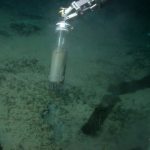Source: Reuters
Author: Zoe Tabary
Ransom-hungry pirates, polar explorers, offshore oil giants – the race for the riches of the world’s final frontier is on.
From Thailand to Alaska, the battle to tap ever-dwindling resources from minerals to fish is spurring new conflicts over who has the right to the treasures of the deep seas.
Continue reading The final frontier: who owns the oceans and their hidden treasures?




